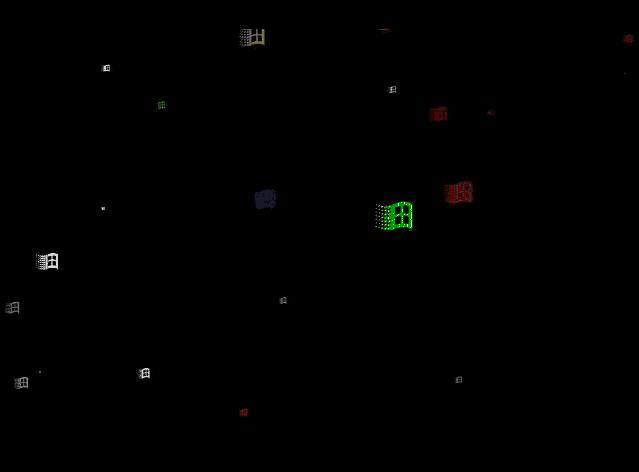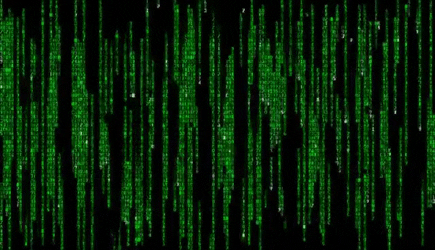Screensavers : What do they save screens from?
 Mahmoud Ashour
Mahmoud Ashour
Have you ever wondered why is this DVD logo bounces across the screen getting closer and closer to hitting the corner? And why is the background black? And why did it become a meme where it got groups of people sitting and watching the screen for hours, cheering as the "DVD icon" almost hits the corner!

Also, Why does the DVD player Logo is designed to cover every pixel on the screen?
Ironically, It serves as an important computer program. Today I'll be talking about several subtopics including:
The history of Screensavers.
The Reason of Screensavers.
Most famous Screensavers out there.
Current use of Screensavers.
Invoke current system's Screensaver.
Screensavers : The history
The first screensaver was allegedly written for the original IBM PC by John Socha. The screensaver, named scrnsave, was published in the December 1983 issue of the Softalk magazine.

It simply blanked the screen after three minutes of inactivity (which was an interval which could be changed by recompiling the program).
By 1983 a Zenith Data Systems executive included "screen-saver" among the new Z-29 computer terminal's features which "blanks out the display after 15 minutes of non-activity, preventing burned-in character displays." The first screensaver that allowed users to change the activating time was released on Apple's Lisa, in 1983.
The Atari 400 and 800's screens would also go through random screensaver-like color changes if they were left inactive for about 8 minutes where normal users had no control over this, though programs did. Prior to these computers, games for the 1977 Atari VCS/2600 gaming console such as Combat and Breakout, included color cycling.
Android 4.2 introduced "daydreams", screensavers that activate while the device is docked or charging.
Also, One of the earliest examples of a screensaver-like functionality was in the DECsystem-10, a mainframe computer developed by Digital Equipment Corporation (DEC) in the late 1960s. The DECsystem-10 featured a program called "Timing and Display Control" (TDC), which could display a clock and other information when the system was idle.
Screensavers: The Reason
Image: r/mildlyinteresting - The burn-in on this CRT TV (it’s turned off)
As you can see, the unmoving CCTV borders have burned themselves into the screen while displaying all-over the years.
Before the advent of LCD screens, most computer screens were based on cathode ray tubes (CRTs).Old CRT displays suffered from a phenomenon called Screen burn-in, what exactly happened that these old screens used a phosphor coating on the “screen” part, which would create light when exposed to the CRT’s electron gun. This coating loses its luminescence over time, so uneven wear could occur if the screen was left to display a static image for too long. Essentially, the image was burned into the phosphor lining.
This phenomenon also called “ghost” of an image appearing on screen, despite a changing image underneath it. In severe cases, this can even be seen when the screen is off.
Screensavers : Most famous
- 3D Pipes: Included with Microsoft Windows operating systems

- Flying Windows: Another classic screensaver bundled with Microsoft Windows

- Mystify: Also included with Windows.

- After Dark Flying Toasters: The Flying Toasters screensaver from the After Dark software became iconic in the 1990s.

- Starfield Simulation: This screensaver, often included with various operating systems and software packages.

- Ribbons: Found in the collection of screensavers on Apple's macOS.

And other many more which were very famous especially the "Matrix rain" :

Screensavers : Current use
Modern devices use LCD screens instead of bulky, power hungry CRT/plasma displays which mostly don't suffer from burn-in, of course not anywhere nearly as severely as older display technologies. But They suffer Image persistence instead, which mostly has similar effects but could be reversed over time.
Also, OLED displays have been shown to be somewhat more susceptible to the effect, as a few smartphone manufacturers have found out over the years.
You can still use screensavers on your PC or laptop. But their main purpose is mostly irrelevant at this point given an LCD’s low susceptibility to burn-in, especially since most PCs shut off the screen by default anyway instead of using a screensaver.
Some people find screensavers useful for privacy because they conceal the programs/documents left open on the screen. Also, most can be configured to lock the computer, requiring a password to gain access to the current session.
Some companies -don't laugh- IT policy demands it!
Screensavers : Invoke your system's
In this section, I'll show different options for running a screensaver from and within the terminal for MacOS, Linux & Windows through the command line interface.
MacOS
In MacOS you could run :
open /System/Library/CoreServices/ScreenSaverEngine.app
Windows
In Windows you could run :
start logon.scr /s
As long as the .scr is on the PATH the above command should work.
When Windows runs your screensaver, it launches it with one of three command line options:
/s – Start the screensaver in full-screen mode.
/c – Show the configuration settings dialog box.
/p – Display a preview of the screensaver using the specified window handle.
Linux
This is tested on Debian 12 (Bookworm) with GNU Bash 5.2.15.
In linux there is a variety of multiple packages which invoke the screen saver of the PC.
To begin with, we can use the basic xset:
$ xset dpms force offCopy
This forces the display power management signaling (DPMS) to turn off the screen.
X Screensaver
If using X11, we can employ xscreensaver to trigger the screensaver:
$ apt-get install xscreensaverCopy
$ xscreensaver-command -lock -activateCopy
In particular, we -activate the -lock screen.
GNOME
Then the gnome-screensaver for GNOME:
$ apt-get install gnome-screensaverCopy
$ gnome-screensaverCopy
At this point, if we run the classic GNOME interface, we should see the current screensaver and lock screen.
KDE
Finally, the native alternative for KDE:
$ qdbus org.freedesktop.ScreenSaver /ScreenSaver LockCopy
In this case, we use the QT control command qdbus.
Subscribe to my newsletter
Read articles from Mahmoud Ashour directly inside your inbox. Subscribe to the newsletter, and don't miss out.
Written by

Mahmoud Ashour
Mahmoud Ashour
Software Engineer at Orange | Intelligent network Backend team. Passionate about low level programming and large scale server side applications.